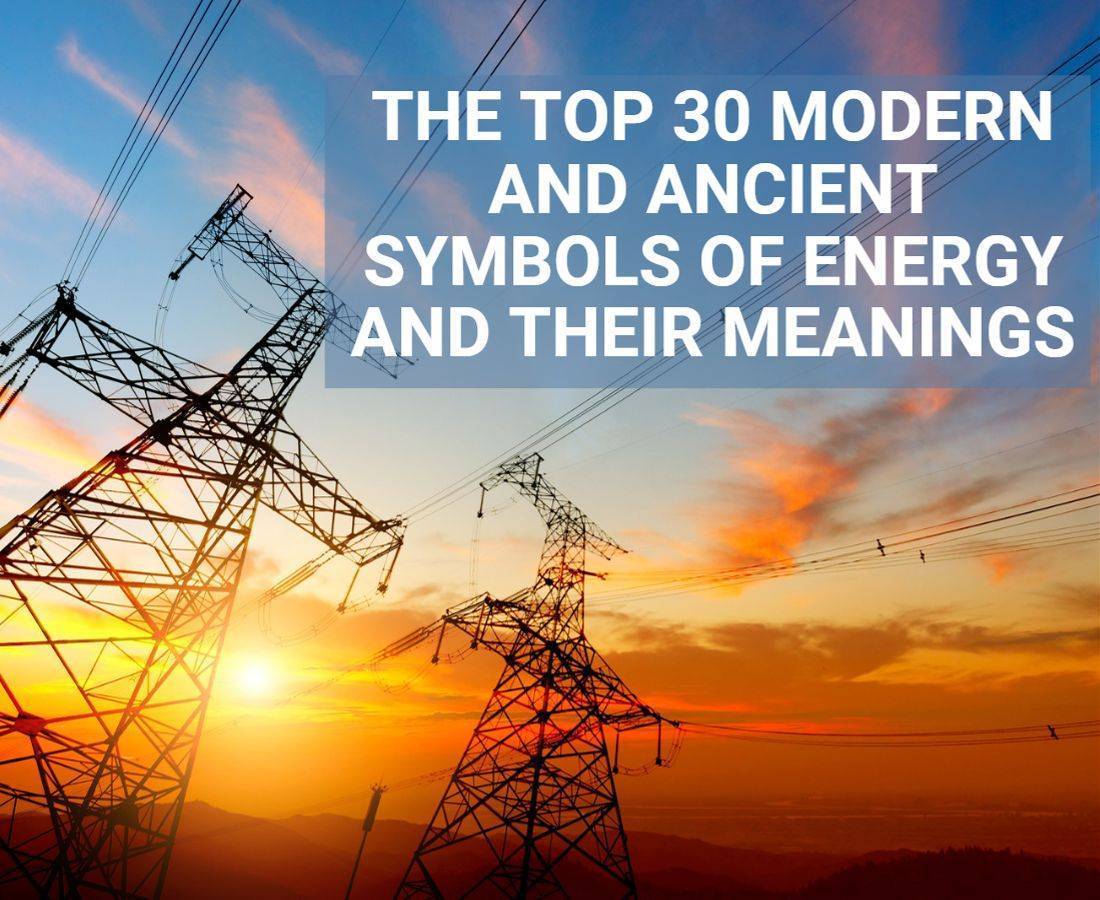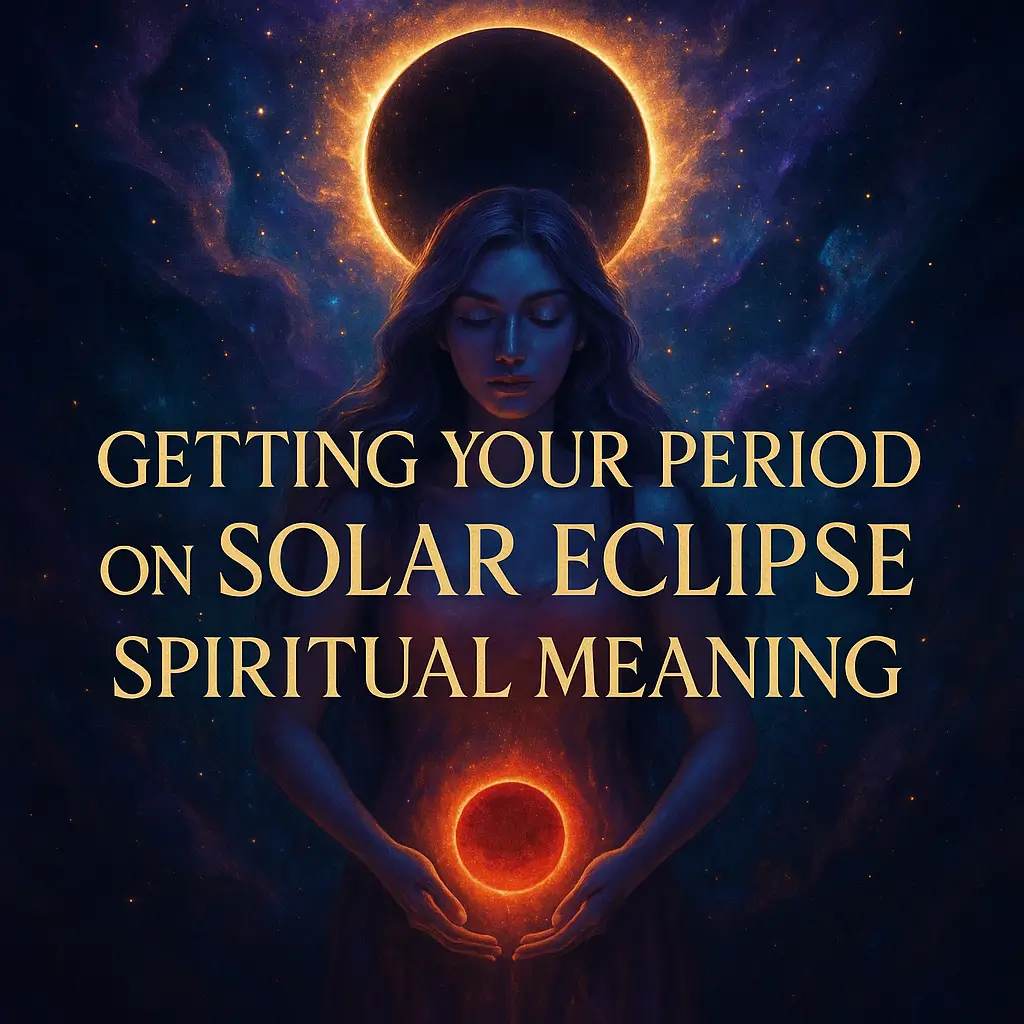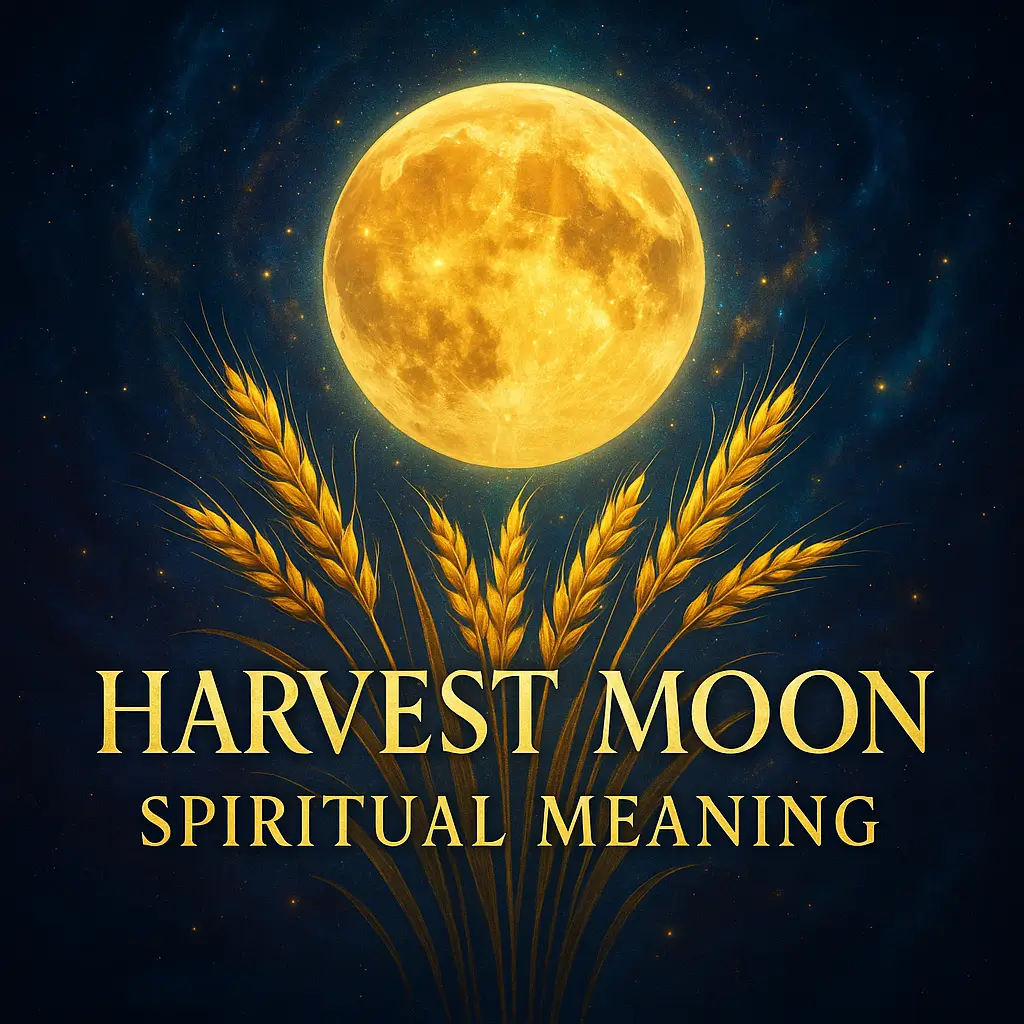Regardless of what you do or who you are, energy can boost your success or cause your demise. While hours of sleeping in, extra cups of java, and heading to the gym may pump you up, these symbols of energy show why everyone admires someone full of zest for life.
Table of Contents
- 1 What is energy?
- 2 Key takeaways
- 3 Sun
- 4 Thunderbolt
- 5 Einstein’s equation
- 6 Feng Shui
- 7 Evil Eye
- 8 Thunderbird
- 9 Yin-Yang
- 10 Big Bang
- 11 Greek goddess Bia
- 12 Triskele
- 13 Celtic Ailm symbol
- 14 Japanese kanji
- 15 The Reiki symbol
- 16 Qi/Chi/Prana/Mana
- 17 Chakras
- 18 Lotus flower
- 19 Water
- 20 Windmills and turbines
- 21 The Triangle
- 22 Nuclear energy and atom symbol
- 23 Fire
- 24 Power lines
- 25 Solar panels
- 26 Green energy
- 27 Energy gauge
- 28 Oil barrels
- 29 Star
- 30 The Eagle
- 31 Tree of life
- 32 Energy drinks
- 33 Positive energy symbols
- 34 Frequently Asked Questions
- 34.1 How does energy influence human behavior and success?
- 34.2 What is the difference between kinetic and potential energy?
- 34.3 How do chakras relate to physical and emotional well-being?
- 34.4 What is the significance of Qi, Prana, and Mana in Eastern philosophies?
- 34.5 How does Feng Shui manipulate environmental energy for well-being?
- 34.6 What makes the lotus flower a powerful energy symbol?
- 34.7 How does E=MC² represent energy’s transformative power?
- 34.8 What is the spiritual meaning of the Yin-Yang symbol?
- 34.9 How do renewable energy symbols like solar panels represent modern energy consciousness?
- 34.10 What does the Triskele symbol teach about energy balance?
What is energy?
Energy is defined as “the ability to be active.” While science tells us that it can be kinetic or potential, it exists in numerous forms. Our ability to harness a substantial amount of it provides several benefits. It enables us to discover our true selves and provides spiritual balance to help us see life from a refreshing perspective.
Energy is the ability to do work. It is a fundamental concept in physics, and is present in many forms in the natural world. Energy can be found in the movement of objects, in the chemical reactions that take place in living things, and in the radiation of heat and light from the sun.
There are many different forms of energy, including kinetic, potential, thermal, electrical, and chemical energy. Energy is essential for life, and is the driving force behind all natural processes. It is also the source of the power that we use in our everyday lives. In this way, energy is a fundamental part of the natural world, and is a powerful symbol of the forces that shape our world and our lives.
“The energy of the mind is the essence of life.”
– Aristotle
Key takeaways
- Energy largely influences your behavior. The thunderbolt tells us to embrace our positive qualities. It reminds us how we should constantly believe in ourselves.
- Energy helps us manage stress. The triskele improves our ability to deal with our triggers. All three of its realms work in harmony to bring more positivity into your life.
- Energy improves our physical health. Our chakras promote positive physical health and well-being. By surrounding ourselves with energetic people, we also become full of life.
Sun
The sun is a symbol of energy and life. It is the source of all light and heat on Earth and has been worshipped and revered by many cultures throughout history. In ancient mythology, the sun was often depicted as a powerful god or deity, representing strength, vitality, and rebirth.
In modern times, the sun continues to be a powerful symbol of energy, warmth, and growth. It is often used to represent the life-giving force that sustains all living things on our planet.
Thunderbolt
The Thunderbolt is a common symbol of power and energy. It is often associated with the god Zeus in Greek mythology, who was said to wield a powerful thunderbolt that he used to strike down his enemies and control the forces of nature.
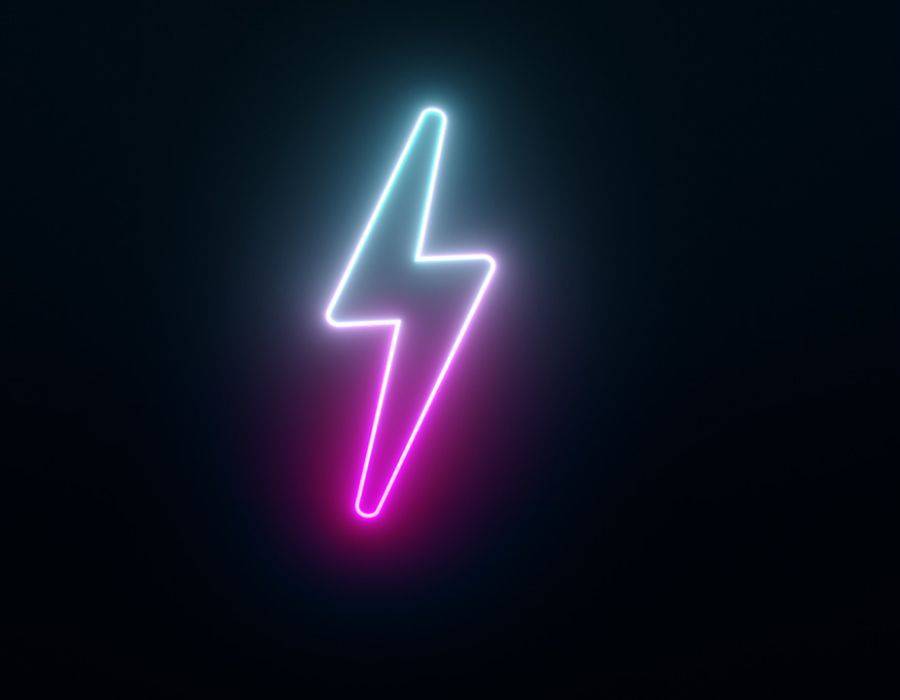
The thunderbolt is often depicted as a jagged bolt of lightning and is a powerful symbol of the raw, destructive power of the natural world. In this way, the thunderbolt is a reminder of the forces of chaos and destruction that can arise when natural energies are unleashed. It is also a symbol of the potential for great strength and power, as well as the dangers that come with it.
Einstein’s equation
Einstein’s equation E=MC2 is a famous equation that is used to describe the relationship between energy and mass. It was first proposed by Albert Einstein in his theory of relativity and is considered one of the most famous and important equations in the history of science.
The equation states that the energy (E) of a body is equal to its mass (M) multiplied by the speed of light (C) squared. This simple equation has far-reaching implications and shows that energy and mass are interchangeable and that they are both expressions of the same underlying phenomenon.
E=MC2 is a powerful symbol of the fundamental nature of energy, and of the profound insights that can be gained through scientific inquiry. It is a reminder of the incredible potential of human knowledge and understanding, and of the power of science to unlock the secrets of the universe.
Feng Shui
Feng shui is an ancient Chinese philosophy that is concerned with the placement and arrangement of objects in the environment. It is based on the belief that the energy (or qi) of a space can be harnessed and directed to promote health, harmony, and prosperity.
Feng shui practitioners use a variety of techniques to manipulate the energy of a space, including the use of color, light, and the placement of furniture and other objects. By creating a balanced and harmonious environment, feng shui practitioners believe that it is possible to improve the flow of energy, and to enhance the well-being of the people who live and work in the space.
As a symbol, feng shui represents the importance of balance and harmony in our environments, and the potential for positive change through the manipulation of energy.
“Acceptance looks like a passive state, but in reality it brings something entirely new into this world. That peace, a subtle energy vibration, is consciousness.”
– Eckhart Tolle
Evil Eye
The evil eye is a common symbol that is found in many cultures and traditions. It is a symbol of protection against negative energy, and is often used to ward off evil spirits and protect against harm. In many cultures, the evil eye is believed to have the power to cause harm, and is associated with feelings of envy and jealousy.
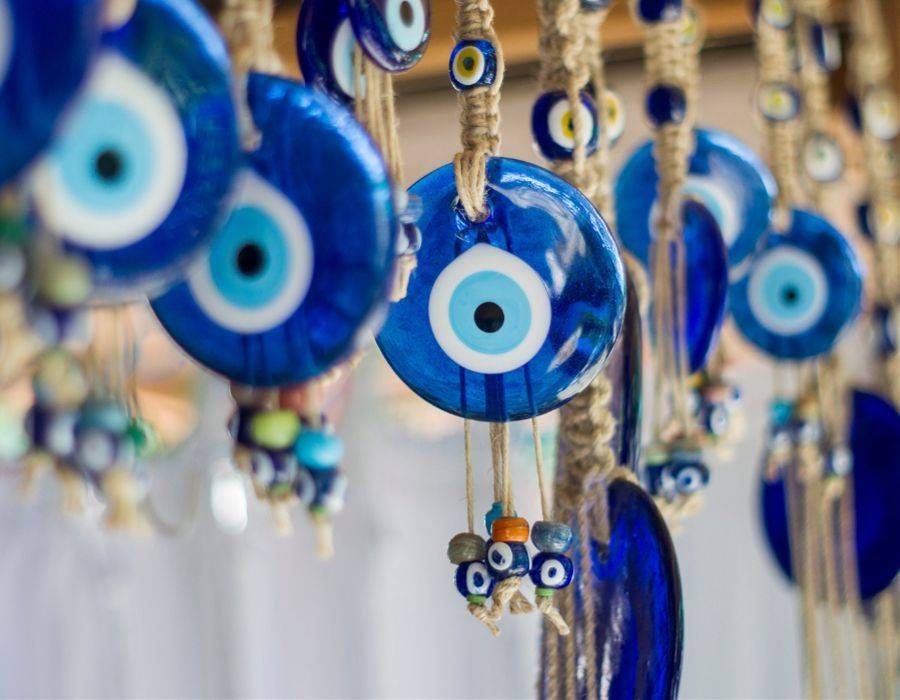
It is said that if someone gives you the evil eye, they are casting a curse or spell on you, and that this curse can bring bad luck and harm. To protect against the evil eye, people often wear charms or amulets, or use gestures or words to ward off the curse. The evil eye is a powerful symbol of the negative energy that can be caused by envy and jealousy, and is a reminder of the need to protect ourselves against these destructive forces.
Thunderbird
The thunderbird is an enormous bird with large claws, sharp teeth, and brilliant feathers.The thunderbird is a common symbol found in many indigenous cultures of North and South America. It is a powerful bird-like creature that is associated with thunder, lightning, and other elements of the natural world.
In many cultures, the thunderbird is seen as a powerful spirit or deity, and is often associated with the sun, sky, and other aspects of the natural world. The thunderbird is often depicted as a large, powerful bird with wings that span the sky, and is said to be able to create thunder and lightning with its powerful flapping.
In this way, the thunderbird is a symbol of the raw power and majesty of the natural world, and of our connection to the earth and the elements. It is often used as a symbol of strength, courage, and protection.
Yin-Yang
The yin-yang symbol is a common symbol found in Chinese philosophy and spirituality. It is a circular shape with two halves, one black and one white, that are interconnected and interdependent. The yin-yang symbol represents the concept of duality, and the idea that opposite forces are interconnected and interdependent.
In Chinese philosophy, yin and yang represent the two complementary and opposing forces that make up the universe. Yin is associated with feminine qualities such as darkness, receptiveness, and stillness, while yang is associated with masculine qualities such as light, action, and movement.
The yin-yang symbol is a reminder of the importance of balance and harmony in the universe, and of the need to find equilibrium between opposing forces. It is often used as a symbol of the interconnectedness of all things and the importance of harmony and unity.
Big Bang
The big bang is a scientific theory that explains the origins of the universe. It proposes that the universe was created around 13.8 billion years ago, in a massive explosion of energy and matter. This explosion is thought to have created all of the matter and energy that make up the universe, and to have set in motion the process of cosmic evolution.
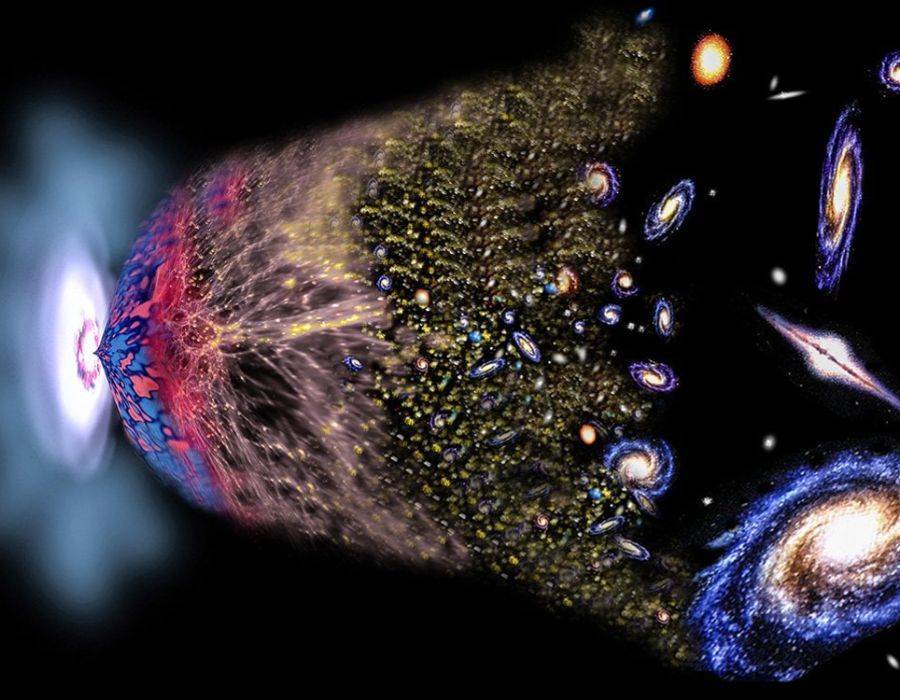
The big bang is a powerful symbol of the vastness and complexity of the universe, and of the incredible energy and power that brought it into being. It is a reminder of the awe-inspiring mysteries of the cosmos and our place within it.
It also urges us to welcome new beginnings and tells us the importance of undergoing a period of radical change.
Greek goddess Bia
In Greek mythology, Bia was the goddess of force and raw energy. She was one of the winged enforcers of the god Zeus, and was known for her strength and power. Bia, the Greek goddess of energy, is known to carry out actions for Zeus that required strength, power, and force. Legend has it that Bia was the only goddess strong enough to hold down Prometheus as he was being chained to a rock after stealing fire from Zeus.
Bia was often depicted as a fierce and formidable warrior, wielding a sword and shield. She was said to be the personification of force and might, and was associated with concepts such as power, courage, and determination. In this way, Bia was a powerful symbol of the raw energy that drives us to achieve our goals and overcome obstacles. She was a reminder of the importance of strength and determination in the face of adversity.
Triskele
The triskele, one of the Celts’ oldest and most widely used symbols, represents the Earth, sky, and water – the three realms of material and energy existence.
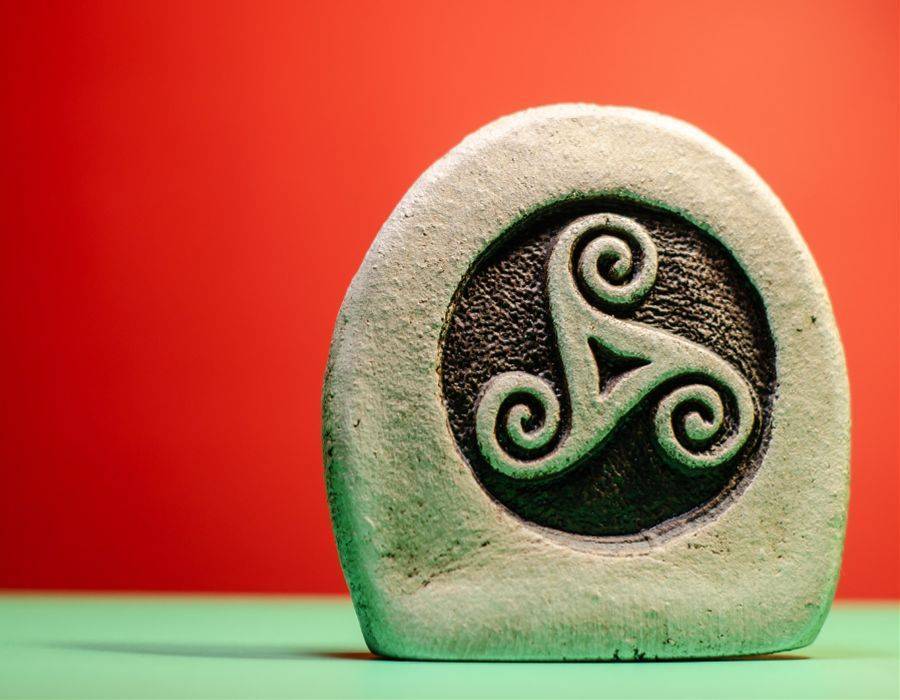
It inspires a harmonious balance among these active energies, allowing us to gain enlightenment and wisdom.
Celtic Ailm symbol
The Celtic Ailm symbol is a common symbol found in Celtic art and spirituality. The Ailm symbol is a stylized version of the letter “A”, and is often associated with the concept of unity and oneness.
In Celtic mythology, the Ailm symbol is said to represent the World Tree, a sacred tree that connects the different realms of existence. The World Tree is a symbol of the interconnectedness of all things, and of the unity of the universe. In this way, the Ailm symbol is a reminder of the energy flow and interconnectedness of all living things and the importance of being in harmony with the natural world. It is often used as a symbol of spiritual growth and connection to the divine.
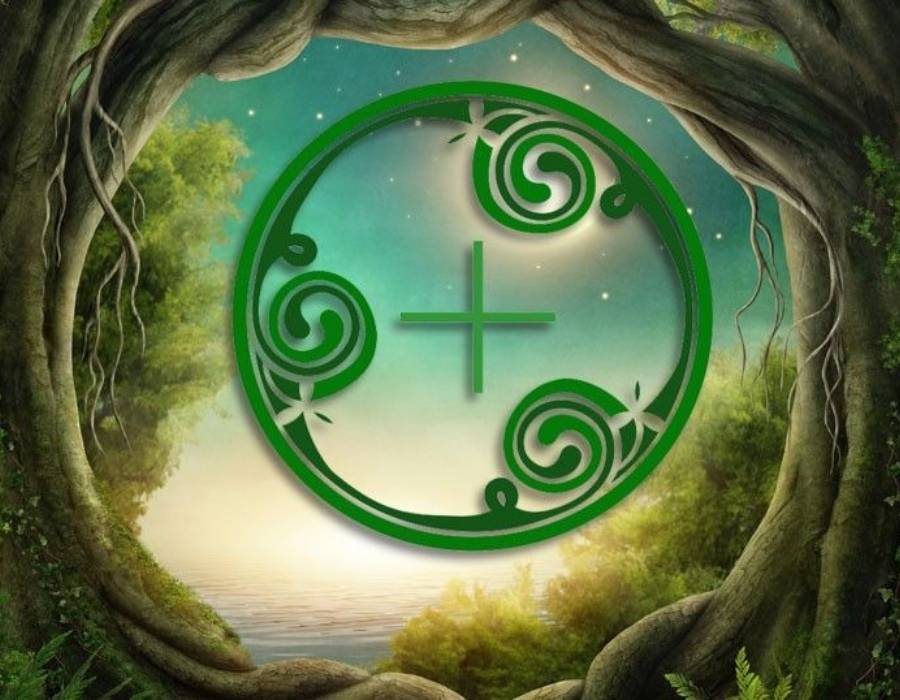
Much like the Triskele, the Ailm is a revered symbol that lends wisdom and knowledge to the Celts. An evergreen tree that grows strong and tall, it provides energy, resilience, and endurance to help us through the most challenging conditions.
Japanese kanji
Japanese kanji are characters that are used in the written form of the Japanese language. Kanji originated from Chinese characters, and have been used in Japan for centuries. Each kanji character represents a specific concept or meaning and can be combined with other characters to form words and phrases.
Kanji are often used as symbols in various contexts, such as on signs, logos, and tattoos. Some kanji are particularly popular as symbols, such as the character for “love” or the character for “peace”.
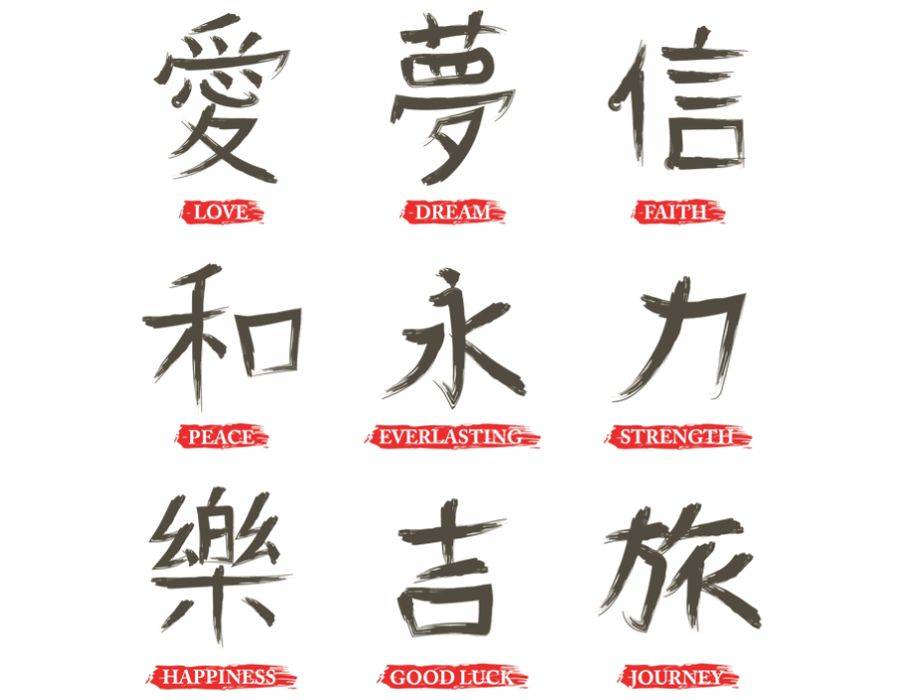
Kanji is also used in martial arts and other traditional Japanese practices, where they are often associated with strength, honor, and discipline. In this way, kanji is a powerful symbol of Japanese culture and heritage.
Established as one of the three writing systems used by the Japanese, kanji are ideographs or written representations of ideas. Representing whole words such as power, spirit, and intensity, kanji channels a powerful energy that inspires us to perform meaningful work.
“Energy can’t be created or destroyed, and energy flows. It must be in a direction, with some kind of internal, emotive, spiritual direction. It must have some effect somewhere.”
– Keanu Reeves
The Reiki symbol
The Reiki symbol is a common symbol used in the practice of Reiki, a form of energy healing. Reiki is a Japanese technique that involves the transfer of universal life energy from the practitioner to the recipient, with the aim of promoting healing and balance. The Reiki symbol is a visual representation of this life energy and is often used as a focus for the practitioner’s intention during a Reiki session.
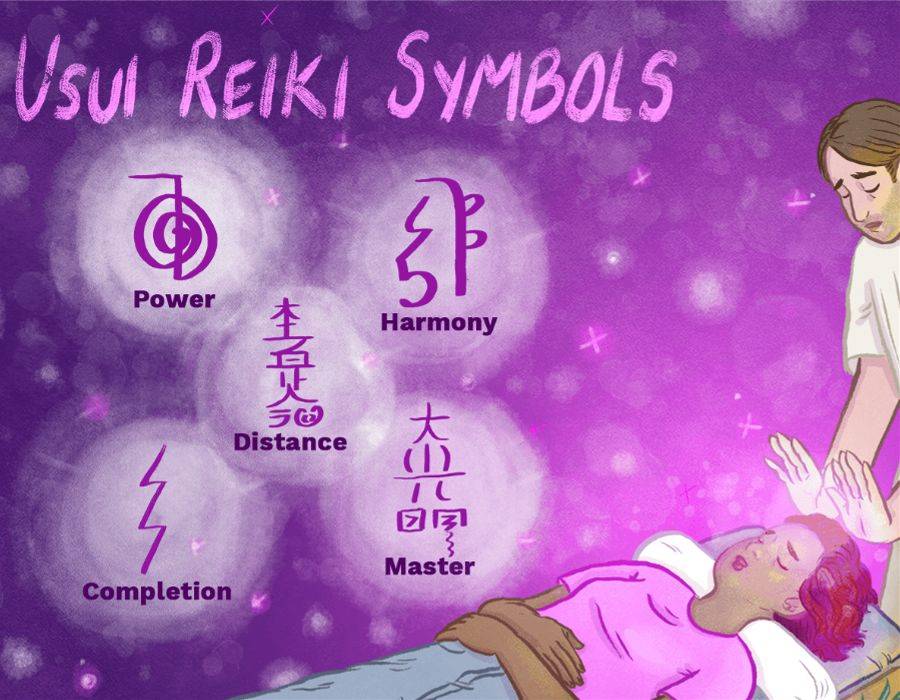
The symbol is said to have powerful healing properties and to be able to channel the life force energy of the universe. It is often associated with feelings of peace, harmony, and well-being. Some people believe that the Reiki symbol has the ability to open up the energy channels within the body, allowing for a deeper and more profound healing experience.
Frequently referred to as our life force, Reiki masters use its energy as a tool for healing, deep relaxation, and increasing or decreasing power. Since proper rest positively affects us, its ability to reduce stress has proven to be highly beneficial to our mind, body, and soul.
Qi/Chi/Prana/Mana
Qi, Chi, Prana, and Mana are all words that refer to the life force or vital energy that is believed to flow through all living things.
In Chinese philosophy, Qi (also spelled Chi or Qi) is the fundamental life force that is believed to animate all living things. In Hindu and Yogic philosophy, Prana is the vital energy that is responsible for sustaining life and maintaining health. Mana is the spiritual energy that is believed to imbue all living things with power and strength.
These concepts are all similar in that they refer to fundamental energy that is essential for life and vitality. They are often associated with practices such as acupuncture, yoga, and meditation, which aim to harness and channel this vital energy for healing and personal growth.
Chakras
In Hindu and Buddhist traditions, chakras are energy centers located throughout the body. There are seven main chakras, each associated with a different aspect of the self.
- The root
chakra , located at the base of the spine, is associated with our connection to the earth and our sense of security. - The sacral
chakra , located just below the belly button, is associated with our emotions and creativity. - The solar plexus
chakra , located in the stomach area, is associated with our personal power and sense of self. - The heart chakra, located in the chest, is associated with love and compassion.
- The throat chakra, located in the throat, is associated with communication and self-expression.
- The third eye
chakra , located between the eyebrows, is associated with intuition and wisdom. - And the crown
chakra , located at the top of the head, is associated with our connection to the divine and our sense of spirituality.
Together, these chakras are seen as a symbol of the energy that flows through our bodies and the potential for spiritual growth and enlightenment.
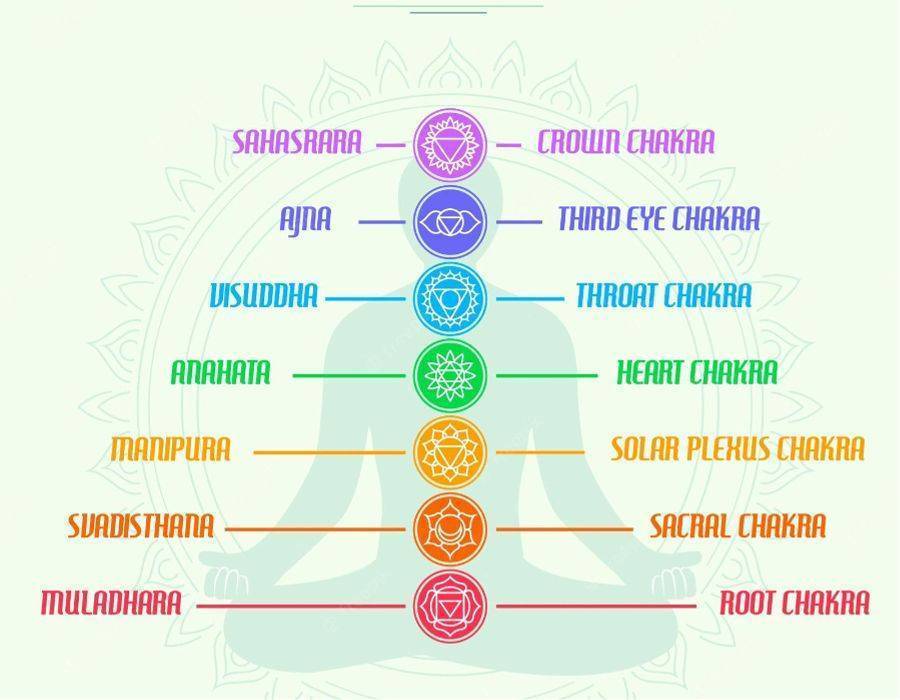
Getting its name from the Sanskrit word that translates to “wheel” or “circle,” chakras are our energy centers that help maintain energy flow in our minds and body. Expressed through symbols of varying geometric shapes, it serves as our guide as we aim to lead a more meaningful and accomplished life.
Lotus flower
The lotus flower is a symbol of growth, energy, purity, and enlightenment. It is often associated with spiritual and religious traditions, particularly in Asian cultures. In Hinduism and Buddhism, the lotus is seen as a symbol of the potential for spiritual growth and the path to enlightenment.
The lotus is unique in that it grows in muddy water and yet remains pure and untouched by the dirt. This symbolizes the ability to rise above adversity and reach a state of purity and enlightenment. In this way, the lotus is a powerful reminder of the potential for personal growth and transformation.
Observed to open its petals at sunrise and close them again when the sun sets, the lotus flower symbolizes rebirth, resurrection, and resilience. They remind us about the importance of taking periods of renewal and rest, allowing us to re-energize.
Water
Water is a symbol of life and renewal. It is essential for all forms of life, and has been revered and worshipped by many cultures throughout history. In ancient mythology, water was often depicted as a powerful force, capable of both creation and destruction. It was seen as a source of life, but also as a dangerous and unpredictable element.
In modern times, water continues to be a vital resource and a powerful symbol. It is used in many forms of energy production, including hydroelectric power, and is also essential for agriculture and other industries. Water is a reminder of the importance of preserving this precious resource for future generations.
Windmills and turbines
Windmills and turbines are symbols of clean, renewable energy. They use the power of the wind to generate electricity, without producing harmful emissions or pollutants.
Windmills have been used for centuries to grind grain and pump water, while modern wind turbines are a more efficient way to harness the power of the wind. Wind turbines are typically large structures with rotating blades that capture the wind and turn it into electricity. They are often seen as a symbol of our ability to use the natural world to generate power in a sustainable way.
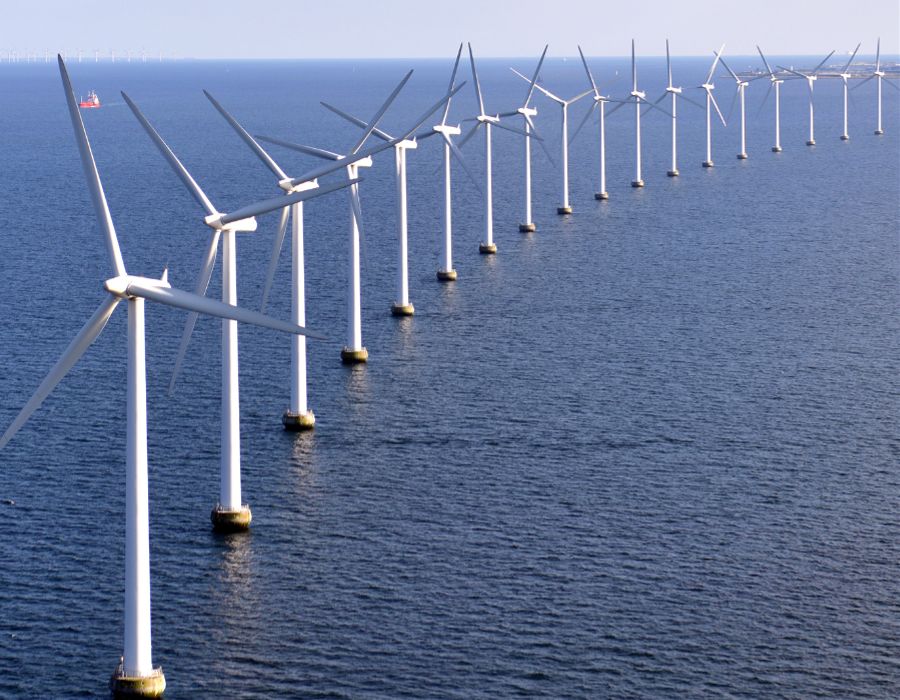
Windmills convert wind power into usable energy with their gigantic blades. Turbines transform the rotational energy of water to power machinery that serves countless remarkable purposes. By taking advantage of the wind’s strength, various cultures view both structures as powerful energy symbols.
The Triangle
The triangle is a common symbol that is often associated with energy and power. In geometry, the triangle is a three-sided polygon that is often used to represent the concept of strength and stability. In many cultures, the triangle is seen as a sacred shape (sacred geometry) and is often associated with spiritual and mystical concepts.
In ancient Egyptian and Greek mythology, the triangle was associated with the goddesses Isis and Sophia, who were both seen as symbols of wisdom and knowledge. In Hinduism, the triangle is associated with the trinity of Brahma, Vishnu, and Shiva, who represent the three aspects of the divine.
In this way, the triangle is a powerful symbol of energy and potential and is often used to represent the unity of the mind, body, and spirit.
Nuclear energy and atom symbol
Nuclear energy and power are symbols of both the potential and the dangers of harnessing the atom. Nuclear power plants generate electricity by using the heat produced by nuclear reactions to create steam, which in turn powers turbines.
This process is highly efficient and can generate large amounts of power without producing harmful emissions. However, the use of nuclear power also carries significant risks, including the potential for accidents and the creation of radioactive waste. As a result, nuclear energy and power are often seen as a symbol of the delicate balance between the benefits and drawbacks of using this form of energy.
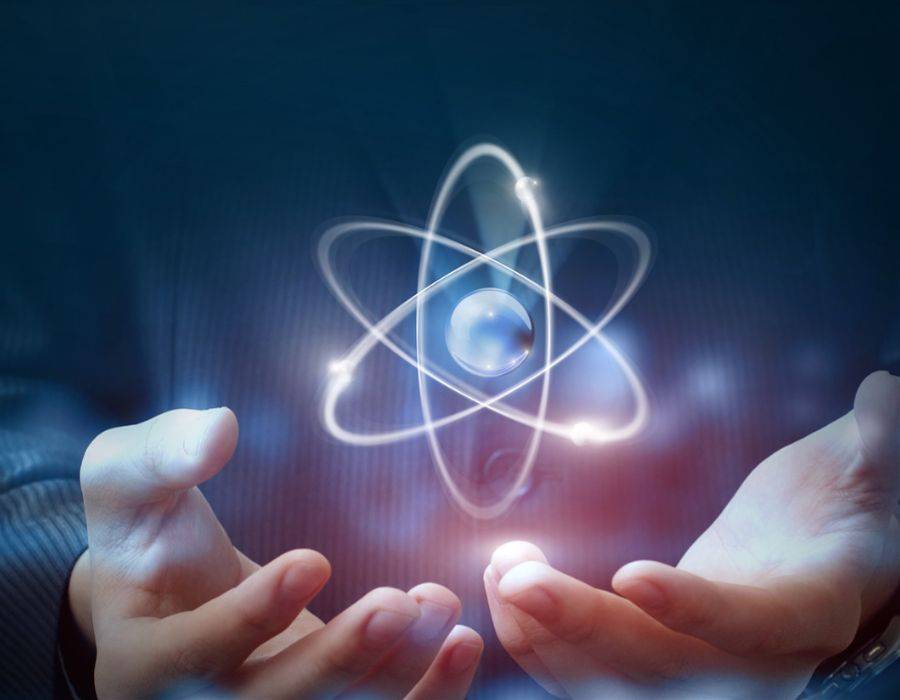
While most people cringe at the mere mention of nuclear energy, its ability to efficiently produce electricity has led many to open themselves to its function and potential. Nuclear power enables us to produce energy while maintaining air quality and reducing the effects of climate change.
Fire
Fire is a symbol of energy, passion, and transformation. It is a fundamental element of the natural world, and has been revered and feared by many cultures throughout history. In ancient mythology, fire was often seen as a divine or sacred force, capable of both creation and destruction. It was associated with the sun and with the power of the gods, and was used in many religious rituals and ceremonies.
In modern times, fire continues to be a powerful symbol of energy and transformation. It is used in many forms of energy production, such as burning fossil fuels, and is also a symbol of passion, creativity, and change. Fire is a reminder of the power of the natural world, and of the potential for growth and transformation that lies within us all.
Power lines
Power lines are a common symbol of energy and electricity. They are the large, overhead wires that carry electricity from power plants to homes and businesses. Power lines are a vital part of our electricity infrastructure, allowing us to access power whenever we need it.
However, they are also a reminder of our reliance on electricity and the need for a constant supply of energy. In some cases, power lines can be seen as a symbol of progress and development, as they bring electricity to remote areas and help power modern societies.
They can also be a source of controversy, as some people argue that they are unsightly and can impact the natural environment. These colossal figures remind us about the value of constantly energizing our work-life balance.
Solar panels
Solar panels are a modern symbol of energy and sustainability. They are a way to harness the power of the sun and convert it into usable electricity. Solar panels are made up of photovoltaic cells, which are able to capture sunlight and turn it into energy.
This process, known as photovoltaic conversion, is clean, renewable, and efficient. By using solar panels, individuals and communities can reduce their reliance on fossil fuels and lower their carbon footprint. Solar panels are often seen as a symbol of our ability to harness the power of the sun and use it to create a more sustainable future.
Many have tapped it for practical applications due to benefits such as lower electricity bills and carbon footprints.
Green energy
Green energy is a symbol of renewable and sustainable sources of energy. It refers to forms of energy that are clean, environmentally friendly, and sustainable. Examples of green energy include solar, wind, hydro, and geothermal power. These forms of energy are able to provide power without producing harmful emissions or pollutants.
Green energy is often seen as a symbol of our commitment to protecting the environment and finding more sustainable ways to generate power. By investing in green energy, we can reduce our reliance on fossil fuels and create a cleaner, healthier planet.
Energy gauge
An energy gauge is a device that is used to measure and display the level of energy that is present in a system. Energy gauges are commonly found in vehicles, appliances, and other devices that use or consume energy.
An energy gauge typically consists of a dial or display that shows the current level of energy, and may also include other features, such as a warning light or alarm, to alert the user when the energy level is low or running out.

As a symbol, an energy gauge represents the need to monitor and manage our use of energy, and to be aware of the levels of energy that are available to us. It is a reminder of the importance of conserving and using energy wisely, in order to sustain our well-being and the health of the planet.
Oil barrels
Oil barrels are a common symbol of energy, specifically of the fossil fuels that are used to power many of the world’s economies. An oil barrel is a unit of measurement for oil, equal to about 42 gallons.
Oil barrels are often used as a visual representation of the amount of oil that is being produced, traded, or consumed. In this way, oil barrels are a powerful symbol of the global energy market, and of the importance of fossil fuels in modern society.
They are also a reminder of the environmental and social impacts of the oil industry, such as pollution, climate change, and conflicts over resources. Despite these challenges, oil barrels remain a powerful symbol of the energy that drives our world.
Star
The star is a common symbol of energy, light, and inspiration. It is often associated with the heavens, and with the celestial bodies that light up the night sky. In many cultures, the star is seen as a symbol of hope, guidance, and divine inspiration. In ancient mythology, the star was often associated with the gods and goddesses, who were believed to reside in the heavens and to guide the destinies of mortals.
In modern times, the star continues to be a powerful symbol of light, hope, and inspiration. It is often used as a symbol of success, achievement, and the potential for greatness. The star is a reminder of the light that guides us through the darkness, and of the potential for growth and transformation that lies within us all.
The Eagle
The eagle is a powerful and majestic bird that is often associated with strength, courage, and freedom. In many cultures, the eagle is seen as a symbol of power and nobility, and is often associated with the sun and the sky. In ancient mythology, the eagle was often associated with the gods and goddesses, who were believed to fly on the wings of eagles and to possess great strength and wisdom.
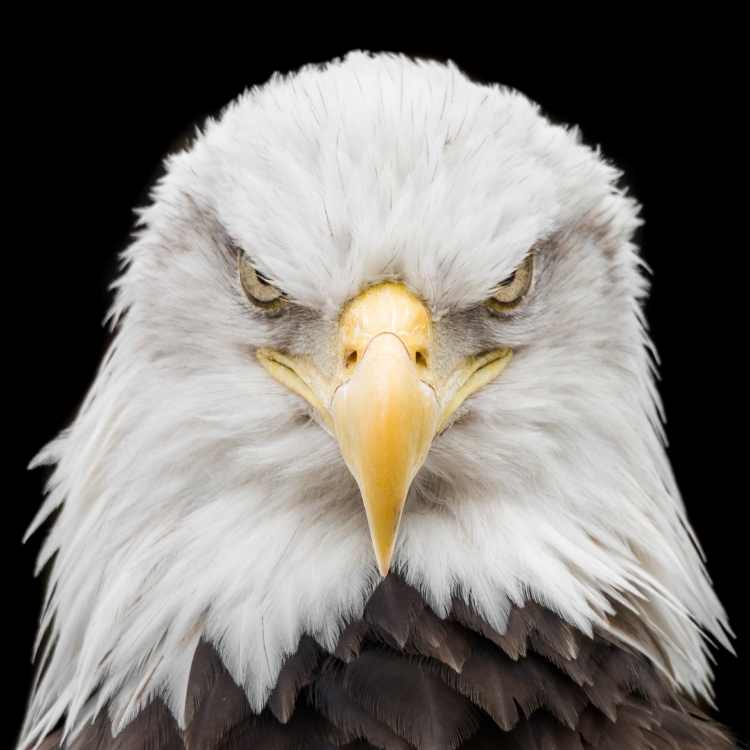
In modern times, the eagle continues to be a powerful symbol of freedom, power, and the potential for greatness. It is often used as a national symbol, and is a reminder of the strength and nobility of the human spirit. The eagle is a powerful symbol of the energy and potential that lies within us all.
Tree of life
The tree of life is a common symbol that is found in many cultures and traditions. It is a symbol of the interconnectedness of all living things, and of the endless cycle of growth, death, and rebirth that is found in the natural world. In many cultures, the tree of life is seen as a sacred symbol, and is often associated with the divine.
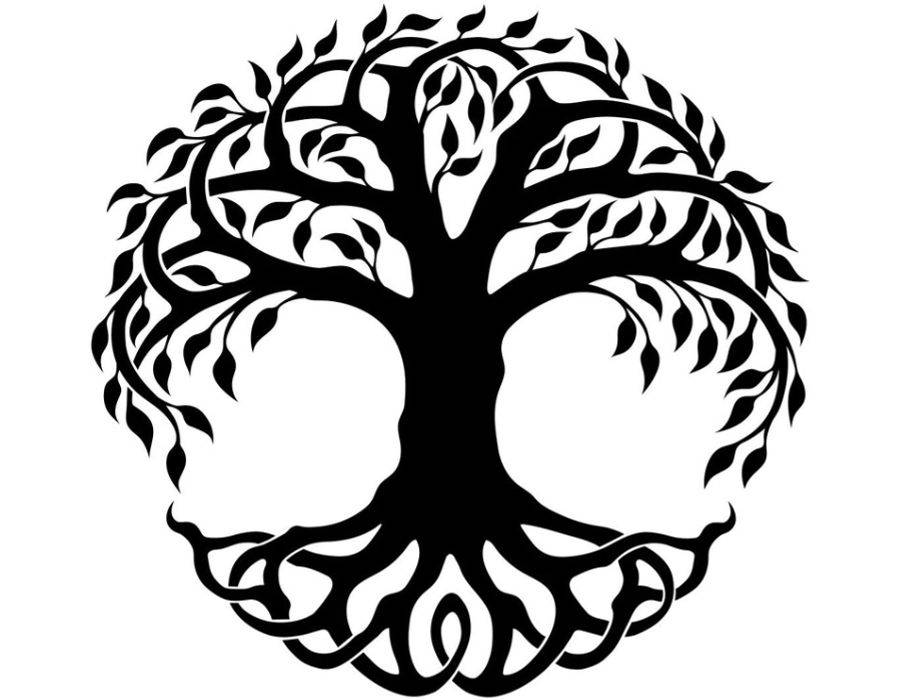
In ancient mythology, the tree of life was often depicted as a great tree that stood at the center of the world, and whose branches reached up to the heavens. In modern times, the tree of life continues to be a powerful symbol of the interconnectedness of all living things, and of the endless cycle of life and death that is found in the natural world.
It is a reminder of the energy and vitality that is present in all living things, and of the potential for growth and renewal that exists within us all.
Energy drinks
An energy drink is a type of beverage that is designed to provide a quick boost of energy and alertness. Energy drinks typically contain high levels of caffeine, sugar, and other stimulants, and are often marketed as a way to increase physical and mental performance.
Energy drinks are a common sight in many modern societies and are often consumed by people who need a quick pick-me-up, such as students, athletes, and shift workers.
As a symbol, energy drinks represent the desire for a quick fix, for a burst of energy and alertness that can help us to perform at our best. They are also a reminder of the growing demand for energy in our fast-paced, high-stress world, and of the many ways that we seek to boost our energy and keep up with the demands of modern life.
Despite the potential health risks associated with excessive caffeine and sugar consumption, energy drinks remain a popular choice for many people seeking a quick boost of energy and vitality.
Positive energy symbols
There are many symbols that are associated with positive energy, including the sun, the lotus flower, and the chakras. These symbols are often associated with ideas of growth, vitality, and renewal, and are used to represent the life-giving and uplifting aspects of energy. Other symbols of positive energy include the spiral, the star, and the circle, which are all associated with ideas of harmony, balance, and unity.

In many cultures, these symbols are used to represent the positive, life-affirming aspects of energy, and are often used in rituals and ceremonies to promote health, well-being, and prosperity. These symbols are a reminder of the potential for growth, transformation, and positive change that exists within us all.
Frequently Asked Questions
How does energy influence human behavior and success?
Energy directly shapes behavior, motivation, and outcomes. High energy levels enhance focus, decision-making, and resilience, while low energy diminishes performance. Symbols like the thunderbolt remind us to embrace positive qualities and maintain self-belief, which fuels consistent achievement and personal growth.
What is the difference between kinetic and potential energy?
Kinetic energy is the energy of motion—active movement in objects. Potential energy is stored energy, ready to be released. Both forms exist throughout nature and our bodies. Understanding this distinction helps us harness energy effectively for physical activity, spiritual balance, and purposeful action in daily life.
How do chakras relate to physical and emotional well-being?
Chakras are seven energy centers aligned along the spine, each governing specific aspects: root chakra (security), sacral (creativity), solar plexus (power), heart (love), throat (communication), third eye (intuition), and crown (spirituality). Balanced chakras promote physical health, emotional stability, and spiritual alignment through improved energy flow.
What is the significance of Qi, Prana, and Mana in Eastern philosophies?
Qi (Chinese), Prana (Hindu/Yogic), and Mana (Polynesian) all represent vital life force energy flowing through living beings. These concepts form foundations for acupuncture, yoga, and meditation practices. They emphasize that invisible energy sustains physical health, mental clarity, and spiritual development across diverse cultural traditions.
How does Feng Shui manipulate environmental energy for well-being?
Feng Shui arranges physical spaces using color, light, and furniture placement to optimize qi flow. By creating harmonious, balanced environments, practitioners believe energy circulates freely, promoting health, prosperity, and mental peace. This ancient philosophy demonstrates how external spaces directly influence internal energy and emotional states.
What makes the lotus flower a powerful energy symbol?
The lotus grows in muddy water yet emerges pure and pristine, symbolizing resilience and spiritual transformation. It opens at sunrise and closes at sunset, representing renewal and rebirth cycles. The lotus teaches that adversity doesn’t diminish us; instead, it enables personal growth and enlightenment through periods of rest and re-energization.
How does E=MC² represent energy’s transformative power?
Einstein’s equation shows energy and mass are interchangeable expressions of the same phenomenon, revealing energy’s fundamental nature. This symbolizes boundless potential—small amounts of matter contain massive energy reserves. It represents how understanding energy’s true nature unlocks human knowledge and reveals universe mysteries through scientific inquiry.
What is the spiritual meaning of the Yin-Yang symbol?
Yin-Yang represents cosmic duality—opposing yet interdependent forces (darkness/light, receptiveness/action, feminine/masculine). This symbol emphasizes balance and harmony between contrasting energies. It teaches that equilibrium between opposing forces creates wholeness, stability, and spiritual alignment in life and the universe.
How do renewable energy symbols like solar panels represent modern energy consciousness?
Solar panels, wind turbines, and green energy symbolize sustainable power harnessing and environmental responsibility. They represent humanity’s ability to work with nature rather than against it, reducing carbon footprints while meeting energy needs. These symbols embody commitment to protecting future generations through cleaner, renewable energy choices.
What does the Triskele symbol teach about energy balance?
The Triskele’s three interconnected spirals represent earth, sky, and water—material and energy realms working in harmony. This Celtic symbol inspires balanced living across three dimensions of existence. It promotes enlightenment and wisdom by demonstrating how diverse energetic forces integrate to create equilibrium and positive life outcomes.
